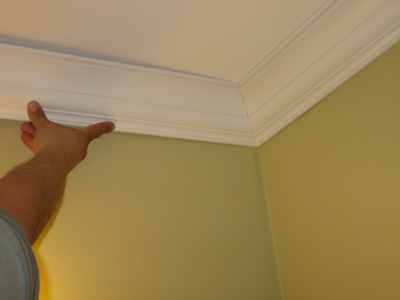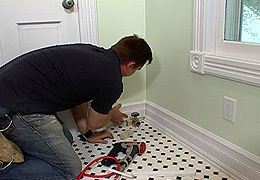Wainscoting: Best Alternative for Decorative Purposes

With all the vacant products on the market to change and improve the cosmetics of the home interior it can be a daunting choice. Wallpaper or borders can make it uncomplicated to theme out a room. Then there are oversee rails or wainscoting. Paneling is another unconventional. Is painting the best decision? What about stenciling? Which is the most cost efficient and least time consuming? What about security?
Installing a chair rail or wainscoting will give any room an idiosyncratic charm and flair, however, special attention, skills, and tools need to be used with this type of cosmetic customizing. A good quality miter saw and/or circular saw, tape measure, and safety instruments are just a few of the tools that are key in order to produce professional results. The majority of households do not have these tools crucial for installing this type of room accenting so is often the most expensive alternative to change a room’s appearance. If expenditure is of no concern, then safety and skill level with these tools is the next topic that needs to be addressed.
Other safety issues are regarding the type of substance from which the chair rail and/or wainscoting is made. Many multiple materials such as MDF or other wood products have been manufactured using a formaldehyde based resin to glue the wood particle board together. This type of glue, commonly used in kitchen counter tops, has been bear out to be carcinogenic. Many wood products, such as preassembled or ready-to-assemble furniture, that use particle board materials can generate off gases that may affect an individual’s health.
Crown Moulding: Making Interiors Extravagant

Crown moulding has been used to develop a room, be it definitive or contemporary in most houses in Orange County. The crown moulding reveals an appeal that different parts of a room are connected especially the walls and ceiling. It does not only put on view a sense of unity, a crown moulding also adds architectural impression to a room through its elaborate design.
Crown moulding is usually applied along the seams where the wall and the ceilings convene. The crown moulding is blushed neither against the ceiling nor against the wall. Rather, when the mouldings are inspectioned at its end, the wall, ceiling and the crown moulding form a triangle. This adds further complicatedness to the installation of the crown moulding, the requirement of complex cuts to form corners when two walls would meet. These can be seen in for the most part city houses in the OC, such as the cities of Costa Mesa, Aliso Viejo and Anaheim to name a few.
Though crown mouldings have been get rid of from new building constructions in modern times, like those of in Orange County, this moulding has endured as one of the more popular forms of architectural impressions. This only bears out as a testament of the charms that this crown moulding has and its potential to shape a room environment, creating an impression of sophistication and uniqueness. Though painting, wallpapers and room furnishings can throw in to creating a unique atmosphere, but adding architectural details to a room provide a more significant sense of style to the room. Crown mouldings are reflected on to play a significant role when in terms of sophistication, as seen in houses in Orange County. Such houses can be initiated in the cities of Brea, San Juan Capsitrano and Santa Ana.
Baseboard Installation

Here are the 6 steps on making Baseboard Installation:
1. Measure the perimeter of the room to determine how much material you’ll need.
2. Select and purchase your materials. Buy more trim than your measurements call for, to allow for scrap ends and for the inevitable mistake or two in measuring and cutting. Some people use a 10 percent excess estimate, but usually just buying an extra stock length or two will do.
3. Prime and sand. If you’ve chosen primed materials, do your sanding before installing the baseboard on the wall to save yourself a lot of time on your hands and knees. If you’ve selected bare wood materials, stain or paint them with primer, allow to dry, and then sand before installing.
4. Measure and cut your pieces to fit. Cutting good miter joints is critical; use a power miter saw instead of a miter box and hand saw for the best results. Where you encounter odd-angle corners, use scrap material for trial-and-error fitting until you find the correct angle cut. Then use that setting on your saw to cut your trim pieces. Read more »
 Leave a Comment
Leave a Comment